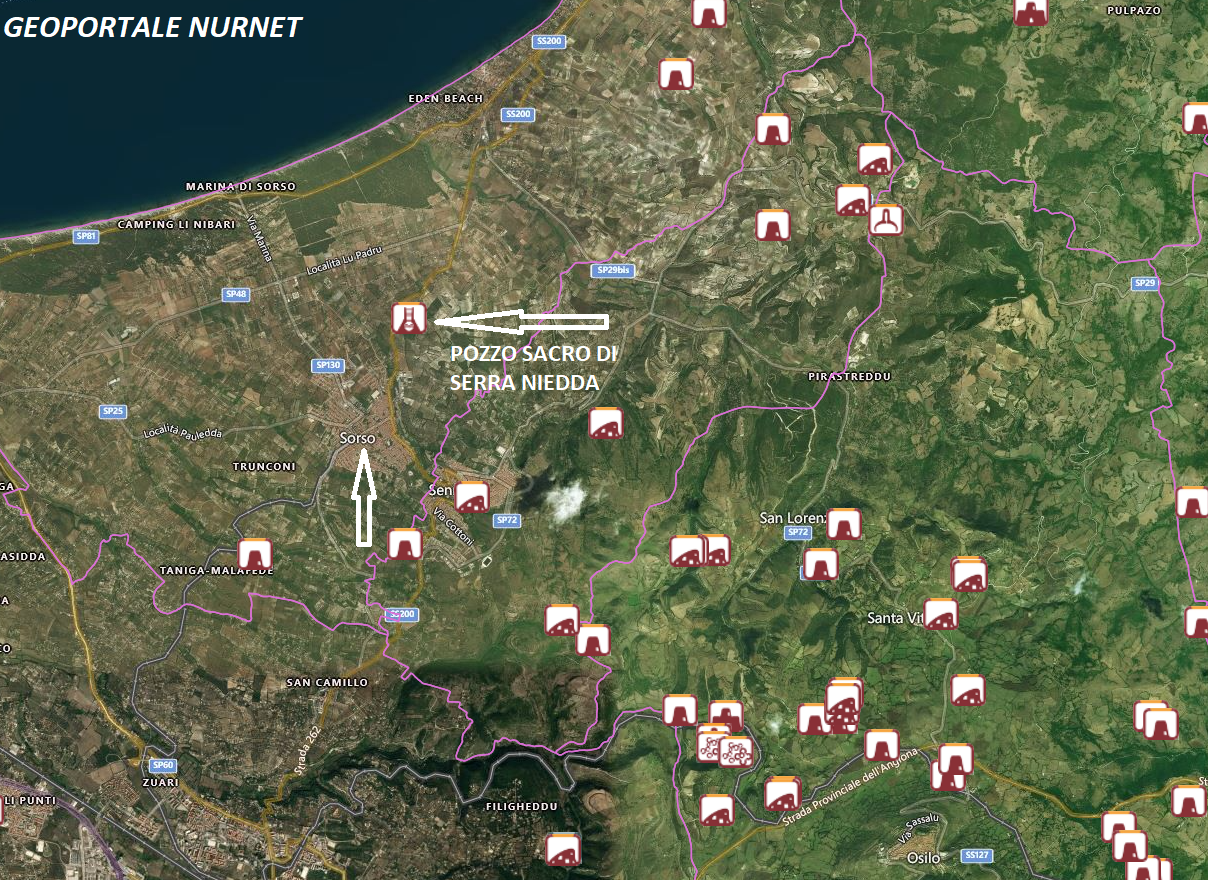< Archaeological finds demonstrate the importance that the entire area held, not only for the local inhabitants but also for other peoples who, over time and for various reasons, came into contact with Sardinia. During the excavations of 1985 (the year the site was discovered), worked limestone blocks and sections of masonry related to a large isodomic temple (about 15 m long) from the post-nuragic era were found, at whose end was a cylindrical cistern reused as a lime kiln in the Medieval Age. Additionally, a monolith, also limestone, possibly an altar, and a lot of ceramic and metal material were discovered. Some of these artifacts are unique in Sardinia. The well temple is 13.5 m wide and can be accessed by descending through fourteen steps, three of which are carved into the rock; the cleaning work also revealed the channel through which the water dripped. Among the rich votive material, numerous statuettes (the so-called nuragic “bronzetti”), both anthropomorphic and zoomorphic, include two of particular relevance: the first depicts an offering figure armed with a spear, wearing a helmet and greaves, a “shepherd king” in a prayer posture, holding a ram (or mouflon) on a leash; the second represents a nude worshipper, lacking the typical static pose of other similar bronzetti, instead rendered with a singular plastic immediacy. Other bronzetti depict warriors, a bull, a mouflon, and a quadrilobed nuraghe. Also found were brooches, buttons, fibulae, and a lot of ceramic material. Finally, remains of burned wood, snail shells, and goat bones used for sacrifices. The site was also frequented during the Roman era, between the 1st century BC and the 1st AD; from this period come some Roman coins and fragments of busts and incense burners (“thymiateria”) featuring the head of the goddess Demeter-Ceres, indicating the presence of fertility-related cults. Important for its uniqueness in Sardinia is a fragment of a marble statue in late archaic Greek style, depicting a youth (“kouros”); this and other finds, along with the proximity of the site to the sea, suggest that it was frequented by Phoenician, Greek, and Etruscan merchants. (from “visitsorso.com”) The photos of the nuragic sanctuary of Serra Niedda are by Andrea Mura – Nuragando Sardegna and Giovanni Sotgiu. Those of the bronzetti found in this sanctuary are taken from the site “Sorso Turismo”.









